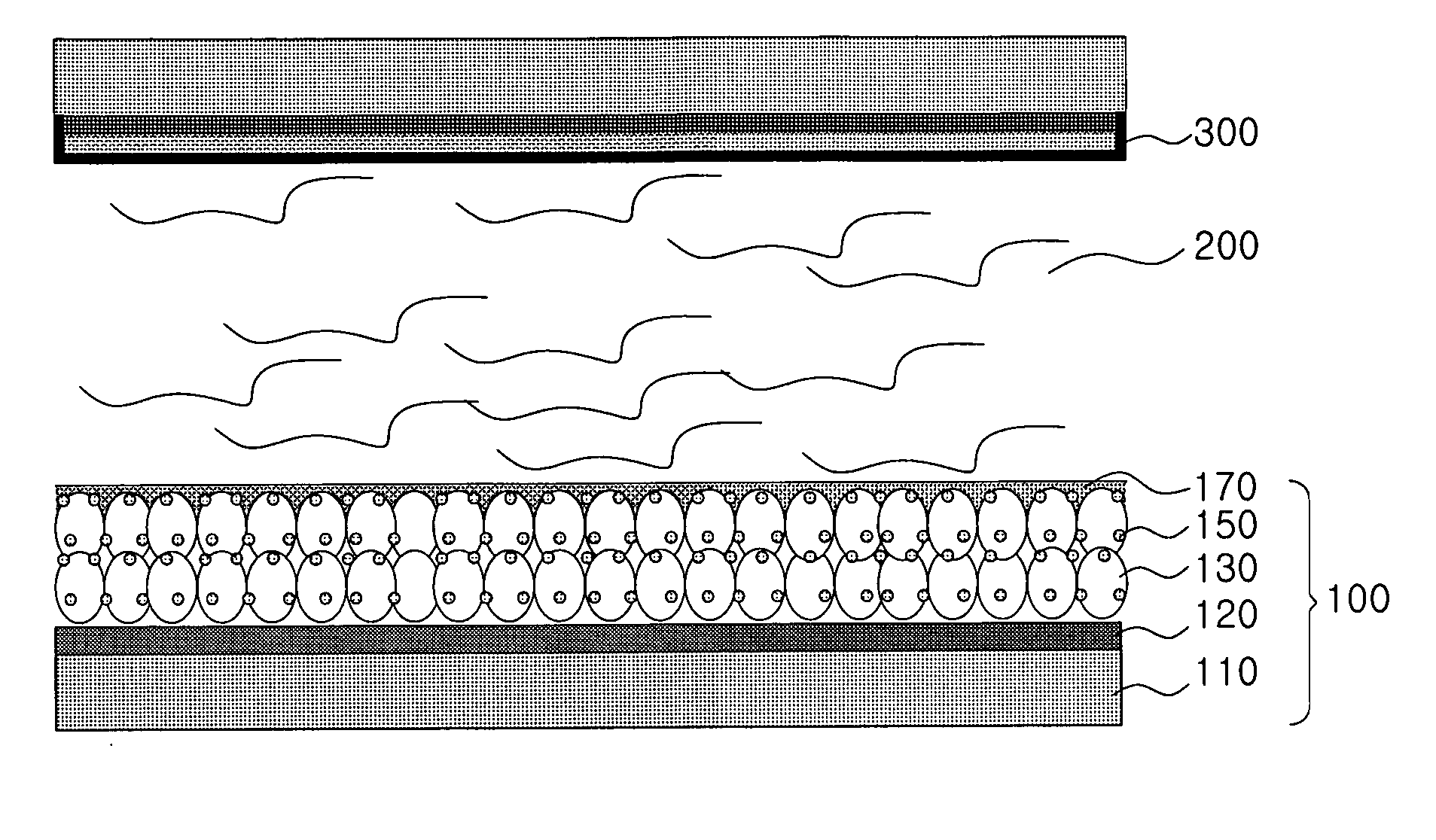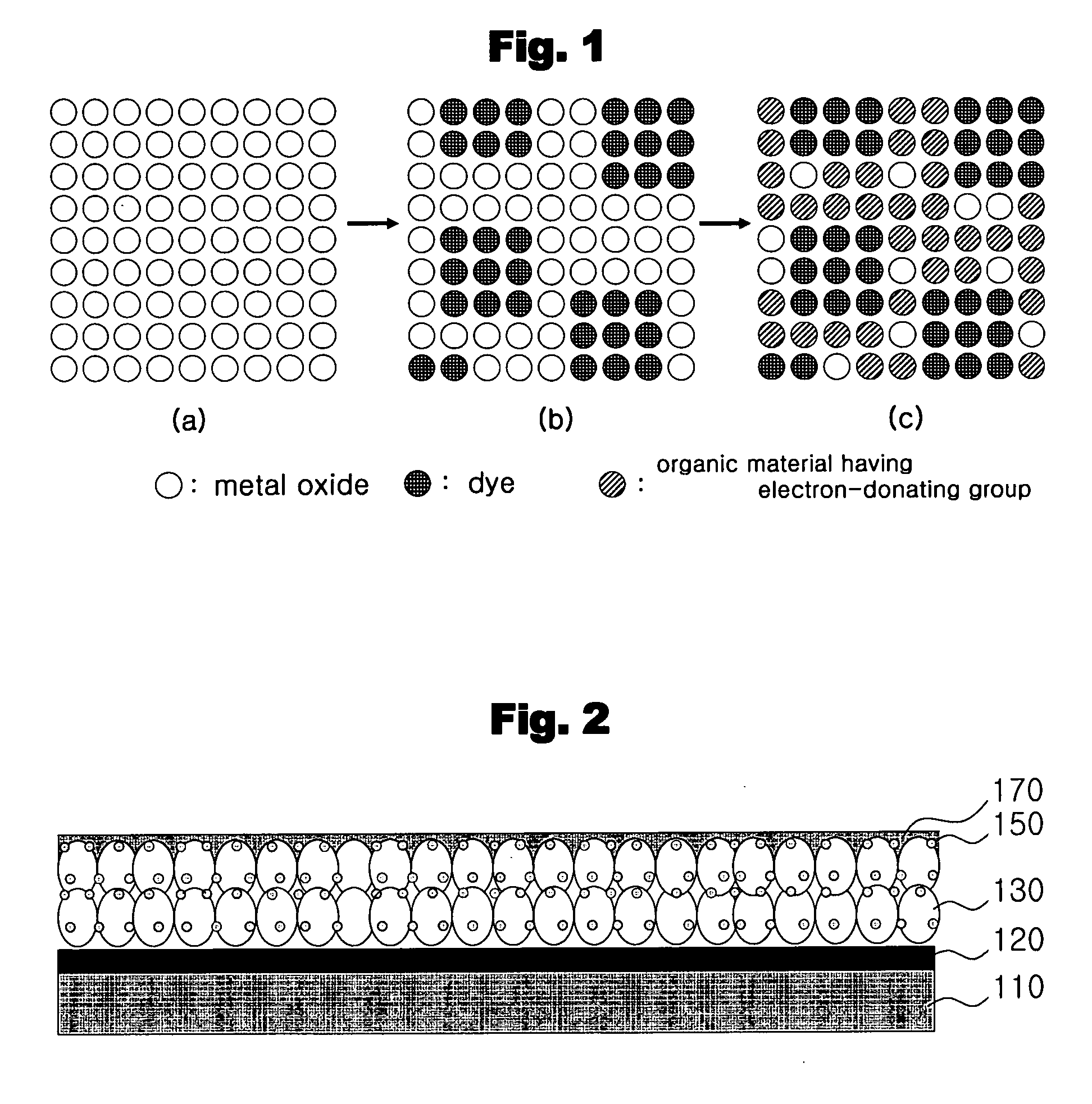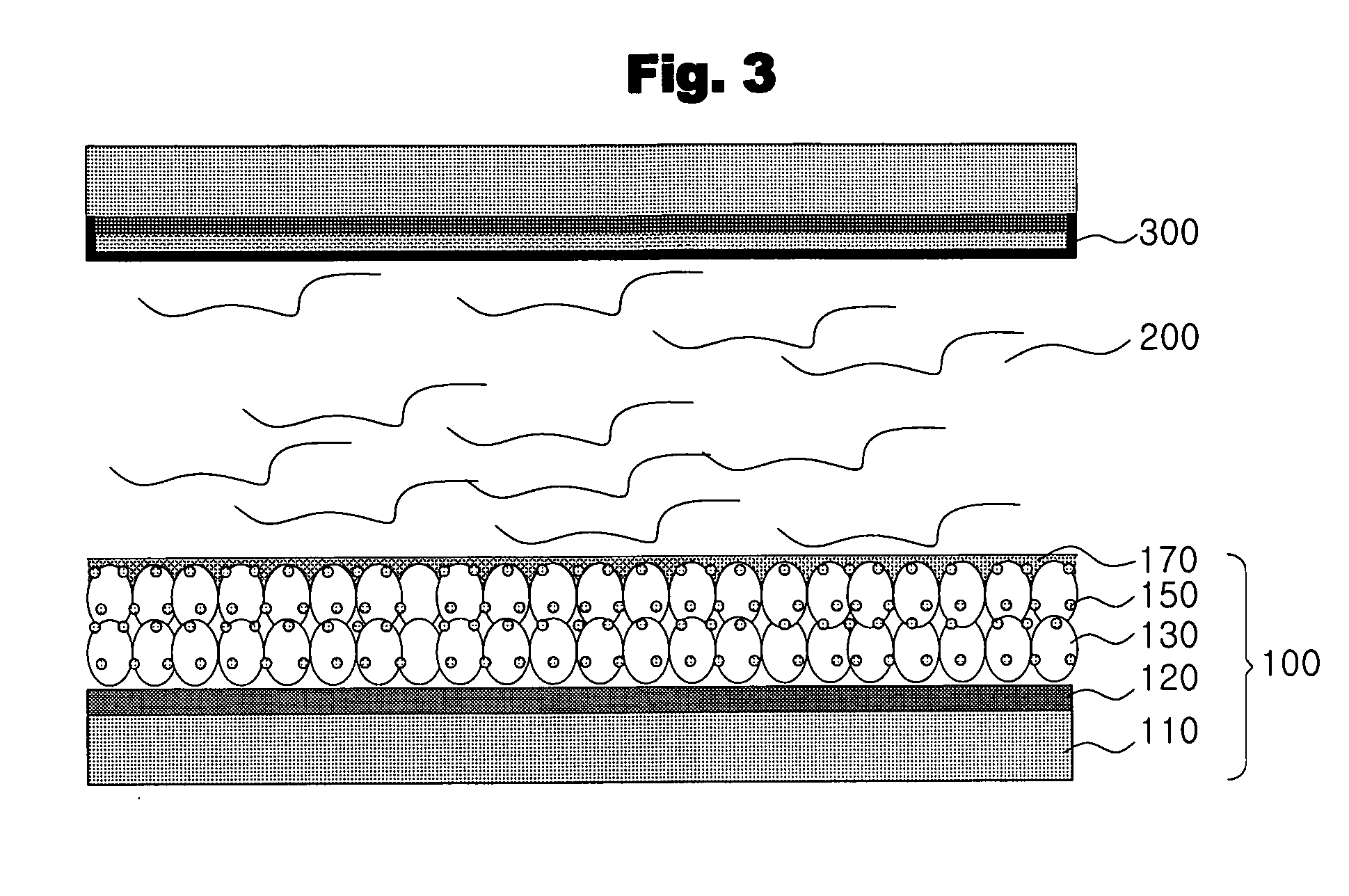Semiconductor electrode, fabrication method thereof and solar cell comprising the same
a technology of semiconductor solar cells and semiconductor electrodes, which is applied in the direction of electrolytic capacitors, solid-state devices, electrochemical generators, etc., can solve the problems of limited ability to improve the conversion efficiency of solar energy into electrical energy, large and expensive equipment for silicon solar cells, and high fabrication costs, so as to achieve the effect of increasing photoelectric efficiency
- Summary
- Abstract
- Description
- Claims
- Application Information
AI Technical Summary
Benefits of technology
Problems solved by technology
Method used
Image
Examples
example 1
[0069] After fluorine-doped tin oxide (FTO) was applied on a glass substrate using a sputter, a paste of TiO2 particles having a diameter of 13 nm was applied using a screen printing process and then dried at 70° C. for 30 minutes. Subsequently, the dried substrate was placed into an electrical furnace, after which the temperature of the furnace was increased at a rate of 3° C. / min. in a normal atmosphere and thus the substrate was maintained at 450° C. for 30 minutes and then cooled at the same rate as that applied when increasing the temperature, therefore obtaining a porous TiO2 film of about 15 μm thick.
[0070] Subsequently, the glass substrate having the metal oxide layer formed thereon was immersed in an ethanol solution of 0.3 mM cis-bis(isothiocyanato)bis(2,2′-bipyridyl-4,4′-dicarboxylato)-ruthenium (‘N3 dye’), represented by Formula 3 below, for 24 hours and then dried, thereby adsorbing the dye on the surface of the TiO2 layer. After the completion of the adsorption of the...
example 2
[0072] A semiconductor electrode was fabricated in the same manner as in Example 1, with the exception that 4-ethoxysalicylic acid (0.1 mmol, 18.2 mg) was used instead of 4-hydroxybenzoic acid.
example 3
[0073] A semiconductor electrode was fabricated in the same manner as in Example 1, with the exception that 5-(4-methoxyphenyl)1,3,4-oxydazole-2-thiol (0.1 mmol, 20.8 mg) was used instead of 4-hydroxybenzoic acid.
PUM
 Login to View More
Login to View More Abstract
Description
Claims
Application Information
 Login to View More
Login to View More - R&D
- Intellectual Property
- Life Sciences
- Materials
- Tech Scout
- Unparalleled Data Quality
- Higher Quality Content
- 60% Fewer Hallucinations
Browse by: Latest US Patents, China's latest patents, Technical Efficacy Thesaurus, Application Domain, Technology Topic, Popular Technical Reports.
© 2025 PatSnap. All rights reserved.Legal|Privacy policy|Modern Slavery Act Transparency Statement|Sitemap|About US| Contact US: help@patsnap.com



